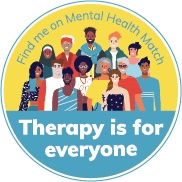The Dysregulation Rollercoaster: Understanding and Managing Emotional Dysregulation
Ahhhhhhh! You’re screaming, it’s scary and you’re afraid. You’re speeding down and down, faster and faster. You can’t do anything to stop it. Now there’s just a lull-you’re barely moving. You’re numb and then all of a sudden, you’re on your way to the top. You’re not sure how you got there but there you are at the peak again fearing for the worst.
Does this sound familiar? Going through life and regularly having intense frequent emotional reactions can be frustrating to say the least. Some days are filled with anxiety, panic, restlessness, and aggravation while others can be described as sad, dull, exhausting, and numb. On occasion, you might find yourself in a good spot, where everything seems ok and fine.

What is Emotional Dysregulation?
What I’m describing is emotional dysregulation-a rollercoaster of emotions. While it is normal to experience these emotions during intense events (death of a loved one, divorce, financial issues, etc.), it can be problematic when they are experienced every day or frequently for months or even years after the event or events have been resolved.
When emotional dysregulation occurs, a person can go from being stuck “on” where your body and mind are in a phase of hyperarousal. That means you can’t relax, you’re on high alert, and many seemingly small things get to you. You are basically a lightning rod for emotions. Opposite is a downward phase where you can be stuck in “off” or hypoarousal. This is when you don’t care about much, you’re disconnected, and you may feel like a slug, hiding out in your bedroom wearing pj’s for several days.
As I hinted earlier, there is usually an event or events that precedes this type of emotional response but not always. Factors such as traumatic experiences, medical issues, and those who are neurodivergent are prone to emotional dysregulation. If the roller coaster goes on for too long, it can lead to long term mental health changes. Additionally, cardiovascular disease; endocrine issues; stomach and intestinal issues; and a weakened immune system can be byproducts of this type of emotional response system.
The Window of Tolerance
This is a term coined by Dr. Dan Siegel, a prominent psychiatrist who has shed light on how the body and brain work together. The window of tolerance is used to describe brain-body reactions. In a healthy nervous system, our emotional state would happily stay regulated much like the thermostat in your home. When it gets too cold, the heat kicks on, and when it’s too hot, the cool air kicks on, keeping your home at a comfortable temperature. Noticing when emotions start to change is key to beginning regulation. Just like the thermostat, in your home. If you notice the house is too cold or too hot, you may go investigate why the thermostat or the heating and cooling system isn’t working properly.
How to Stay Regulated
Finding what works for you might be the challenging part of staying regulated, but keep trying! It is understandable, some days you won’t want to try, and you will want to give up, but consistency will help improve your window of tolerance. This means you will be able to tolerate events, activities, and other life changes without being on the roller coaster. Using mood recording apps like
Moodflow or something similar, will help gather information about emotions, behaviors, thoughts, sensations, daily activities and more. This will help you see patterns you may not have seen before so you can start to address those areas sooner.
Suggestions for Hyperarousal:
- Exercise that increases heart rate and/or requires lifting (running, jumping, weight-lifting, gardening, etc.)
- Meditation
- Progressive muscle relaxation
- Yoga
- Tai-Chi
- Deep breathing
- Playing with your dog or cat
- Calming music (classical music, nature sounds)
- Drinking from a straw
- Weighted blanket
- Massage
Suggestions for Hypoarousal:
- Essential oils (lemon verbena is great for invigorating the senses!)
- Moderate walk
- Energizing music
- Enjoying the sun
- Hiking and sightseeing
- Dancing
- Swimming
- Stimulate the 5 senses
When to Get Help
While the suggestions above can help you stay within the window of tolerance, sometimes they aren’t enough. The ride on the dysregulation rollercoaster can be tough but you don’t have to ride alone. If you feel overwhelmed by your emotions and your well-being is at risk, seeking professional guidance can help you get back on track.




